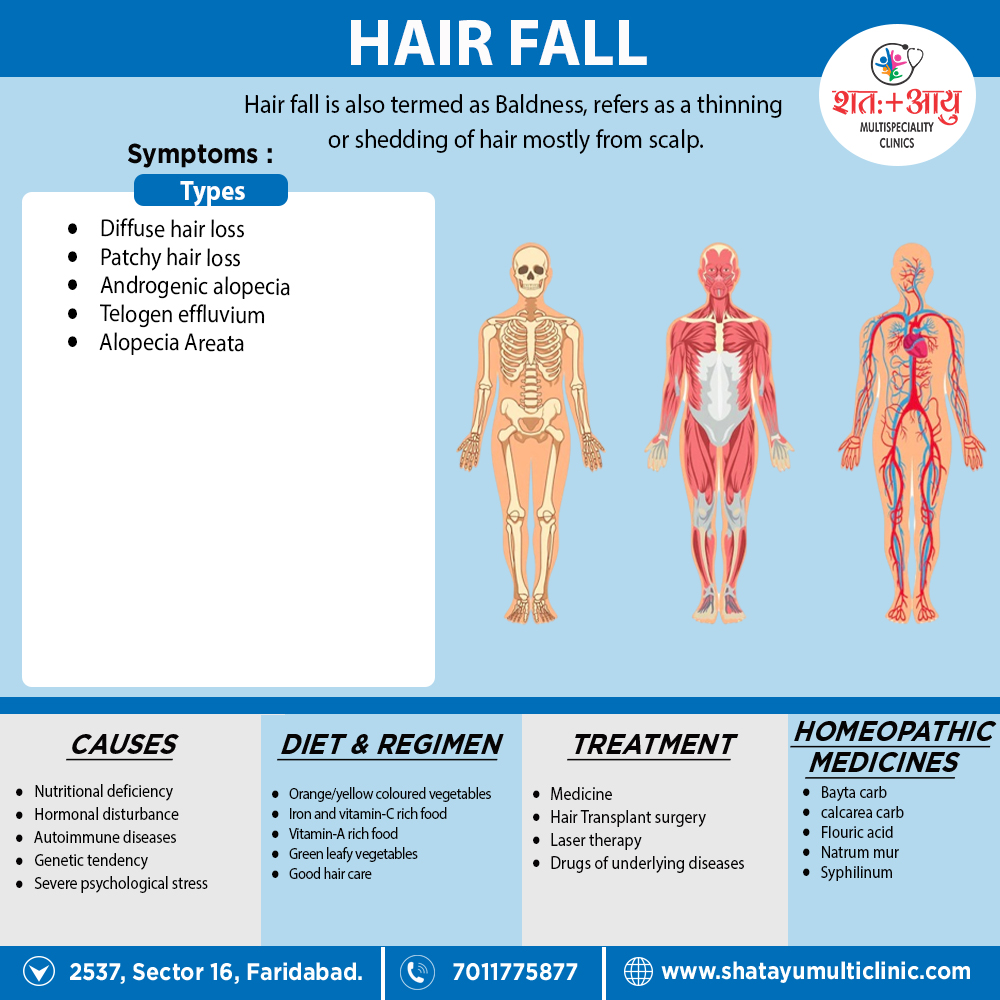Hair Anatomy
Hair can be categorized as either vellus (fine, soft, and not pigmented) or terminal (long, coarse, and pigmented). The number of hair follicles does not change over an individual’s lifetime, but the follicle size and type of hair can change in response to numerous factors, particularly androgens. Androgens are necessary for terminal hair and sebaceous gland development and mediate differentiation of pilosebaceous units (PSUs) into either a terminal hair follicle or a sebaceous gland. In the former case, androgens transform the vellus hair into a terminal hair; in the latter case, the sebaceous component proliferates and the hair remains vellus.[1]
Hair Structure.
The hair shaft is dead protein. It form by compact cells that are covered by a delicate cuticle composed of platelike scales. The living cells in the matrix multiply more rapidly than those in any other normal human tissue. They push up into the follicular canal, undergo dehydration, and form the hair shaft, which consists of a dense, hard mass of keratinized cells. Normal Hairs have a pointed tip. The Hair in the follicular canal forms a cylinder of uniform diameter. Short hairs with tapered tips either have short growth cycles or have experienced the recent onset of anagen.
The Growing shaft surround by several concentric layers. The outermost glycogen-rich layer is called the outer root sheath. It is static and continuous with the epidermis.
Inner root sheath
The Inner root sheath (Henle’s layer, Huxley’s layer, and cuticle) is visible as a gelatinous mass when the hair pluck. It Protects and molds the growing hair but disintegrates before reaching the surface at the infundibulum. The hair shaft that emerges has three layers—an outer cuticle, a cortex, and sometimes an inner medulla—all of which compose of dead protein. The cuticle protects and holds the cortex cells together. Split ends result if the cuticle damage by brushing or chemical cosmetic treatments. The cortex cells in the growing hair shaft rapidly synthesize and accumulate proteins while in the lower regions of the hair follicle. Systemic diseases and drugs may interfere with the metabolism of these cells and reduce the hair shaft diameter. Pigment-containing melanosomes acquire deep in the bulb matrix and are deposited in the cortical and medullary cells.[1]
Hair Follicle.
Humans have about 5 million hair follicles at birth. No follicles form after birth, but their size changes under the influence of androgens. The hair follicle form in the embryo by a club-shaped epidermal down-growth—the primary epithelial germ that invaginate from below by a flame-shaped, capillary- containing dermal structure called the papilla of the hair follicle. The central cells of the down-growth form the hair matrix, the cells of which form the hair shaft and its surrounding structures. The matrix lies deep within the subcutaneous fat. The mature follicle contains a hair shaft, two surrounding sheaths, and a germinative bulb.
Division of Follicles
The follicle divide into three sections. The infundibulum extends from the surface to the sebaceous gland duct. The isthmus extends from the duct down to the insertion of the erector muscle. The inferior segment, which exists only during the growing (anagen) phase, extends from the muscle insertion to the base of the matrix. The matrix contains the cells that proliferate to form the hair shaft. The mitotic rate of the hair matrix is greater than that of any other organ.
The cells begin to differentiate at the top of the bulb. The inner and outer root sheaths protect and mold the growing hair. The Inner root sheath disintegrates at the duct of the sebaceous gland.
Hair Growth greatly influence by any stress or disease process that can alter mitotic activity.[1]
Hormonal regulation
Depending on the body site, hormonal regulation may play an important role in the hair growth cycle. For example, the eyebrows, eyelashes, and vellus hairs are androgen-insensitive, whereas the axillary and pubic areas are sensitive to low levels of androgens. Hair Growth on the face, chest, upper abdomen, and back requires higher levels of androgens and is therefore more characteristic of the pattern typically seen in men.
Androgen excess in women leads to increased hair growth in most androgen-sensitive sites except in the scalp region, where hair loss occurs because androgens cause scalp hairs to spend less time in the anagen phase.
Although androgen excess underlies most cases of hirsutism, there is only a modest correlation between androgen levels and the quantity of hair growth. This is due to the fact that hair growth from the follicle also depends on local growth factors, and there is variability in end organ (PSU) sensitivity.
Genetic factors and ethnic background also influence hair growth. In general, dark-haired individuals tend to be more hirsute than blond or fair individuals. Asians and Native Americans have relatively sparse hair in regions sensitive to high androgen levels, whereas people of Mediterranean descent are more hirsute.[1]

